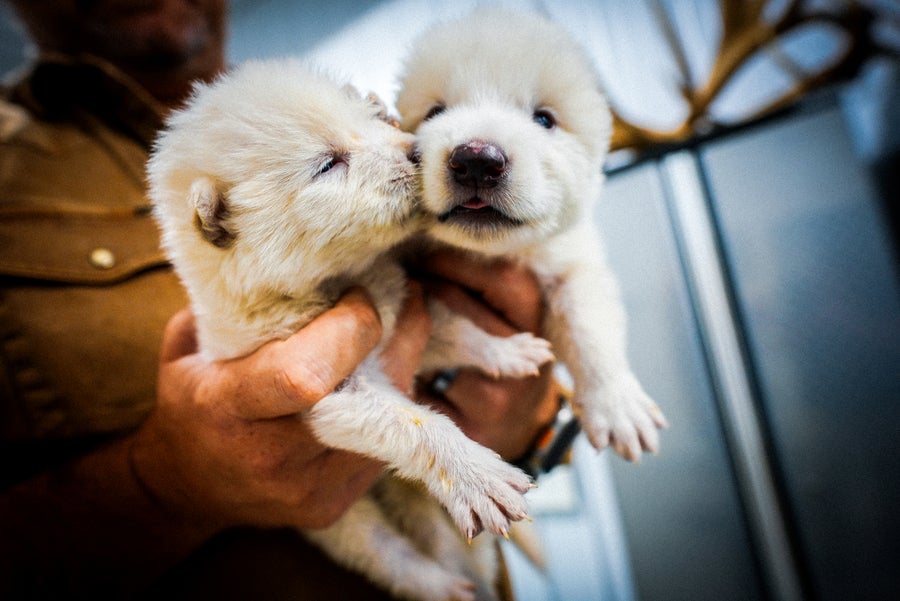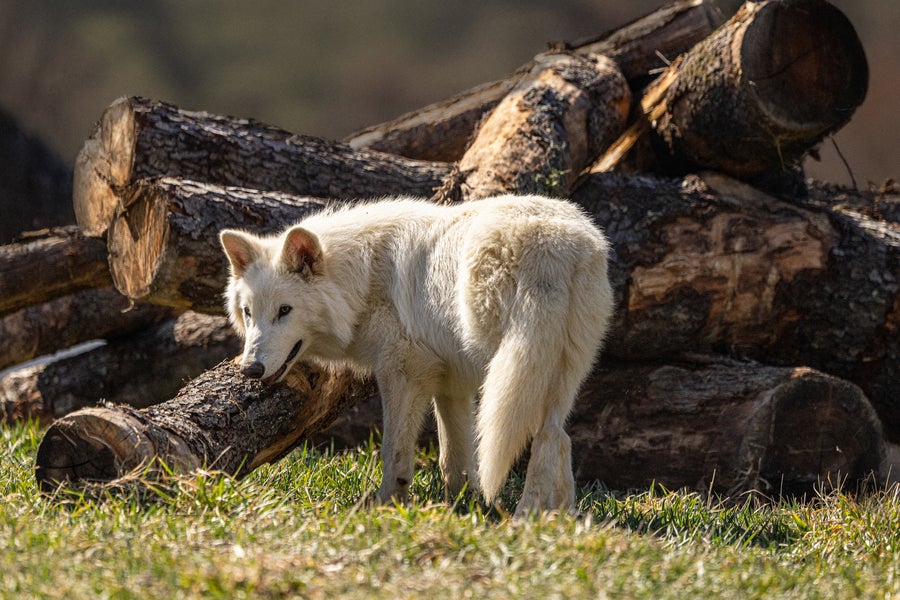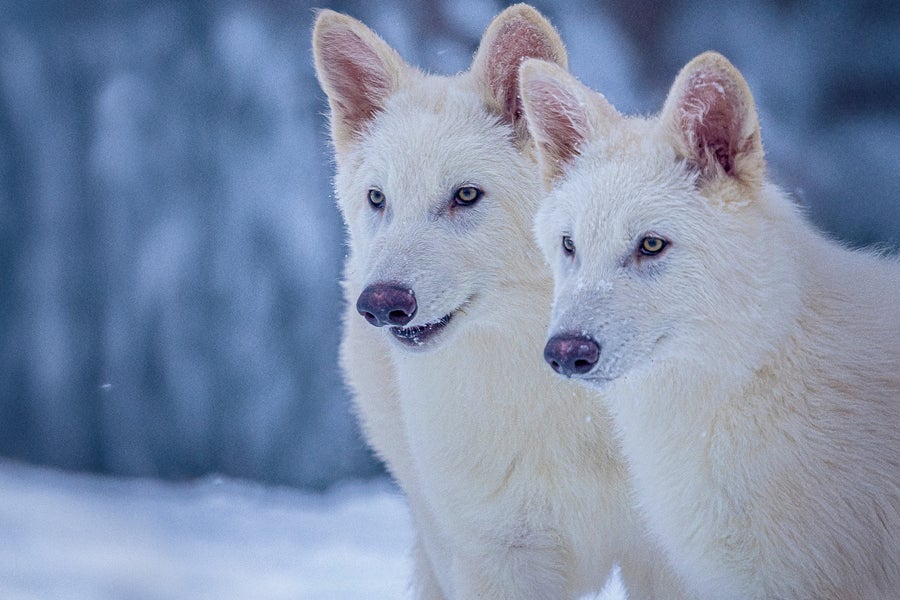The television series Game of Thrones helped popularize dire wolves, but the creatures don’t just represent a figment of science fiction: the dire wolf was a real animal that went extinct around 10,000 years ago. On Monday Colossal Biosciences, a Dallas, Tex.–based biotechnology company, announced that it brought the species back with the birth of two pups last October and a third this past January.
(The company had previously announced the development of a “woolly mouse,” or a mouse whose genome was edited to give it brown, shaggy fur like that of the extinct woolly mammoth.)
But many scientists say what Colossal produced this time is not, in fact, the dire wolf. Rather, they say, it is a gray wolf whose genome has been edited to give it some dire-wolf-like traits.
On supporting science journalism
If you’re enjoying this article, consider supporting our award-winning journalism by subscribing. By purchasing a subscription you are helping to ensure the future of impactful stories about the discoveries and ideas shaping our world today.
What were dire wolves?
Dire wolves (Aenocyon dirus) are an extinct carnivore that lived throughout what are today North and South America during the Pleistocene and early Holocene epochs (about 250,000 to 10,000 years ago). First described in the 1850s, their fossils have been found all over the Americas, perhaps most famously in Los Angeles’ La Brea Tar Pits.

Two of Colossal Biosciences’ “dire wolf” pups.
These predators could grow up to six feet in length, and their large skull and jaws were adapted to take down Pleistocene megafauna such as mastodons and bison. It is thought that dire wolves died out as their prey did.
Because of skeletal similarities, scientists had thought that dire wolves were relatives of modern gray wolves. But DNA evidence published in a 2021 study found dire wolves belonged to a much older evolutionary lineage of dogs. The resemblance between dire wolves and gray wolves is an example of convergent evolution, when species separately evolve similar adaptations because they lead a similar lifestyle, the study’s researchers said at the time.
“This is a designer dog. This is a genetically modified gray wolf.”—Jacquelyn Gill, paleoecologist
Beth Shapiro, who is now Colossal’s chief science officer and was a co-author of the 2021 paper, says the company’s recent work builds on those findings. This time, the scientists were able to extract and sequence DNA from a 13,000-year-old tooth and a 72,000-year-old skull that yielded more complete genomic data than the samples used in the 2021 study. The results, Shapiro says, show the dire wolf was the result of hybridization between two ancient, now extinct canid lineages. Dire wolves’ closest modern relatives are wolves, coyotes and dholes, and the new findings suggest they share 99.5 percent of their DNA with gray wolves. That finding is set to be detailed in a paper that will be posted to the preprint server arXiv.org. (Such preprint studies have not yet been peer-reviewed.)
What did Colossal Biosciences create?
After examining the dire wolf genome, Shapiro and her team edited 20 sites on 14 genes in the genome of the modern gray wolf (Canis lupus), introducing what they say are 15 extinct dire wolf variants. No ancient dire wolf genes themselves were directly inserted into the genome, however. The scientists created embryos that were implanted in surrogate dogs.
Colossal targeted genes that affected phenotype, or the observable characteristics of an organism—in this case, largely its appearance. The company’s scientists edited genes that affect fur color and thickness and body size, as well as ear, skull and facial shape. “We’re using a morphological species concept,” Shapiro says.
To make something that is genetically identical to an ancient dire wolf through gene editing “is not really possible. We can’t create that many edits at once,” she says. “But it’s also not the goal.” Instead, Shapiro adds, “we want to create functional versions of extinct species. We don’t have to have something that is 100 percent genetically identical.”

The “dire wolves” are being kept on a preserve in an undisclosed location.
Other scientists disagree with this view, however. “This is a designer dog. This is a genetically modified gray wolf,” says Jacquelyn Gill, a paleoecologist at the University of Maine, who has worked with Shapiro in the past but was not involved in this project. “I have more than 14 Neandertal genes in me, and we wouldn’t call me a Neandertal.”
The pups “don’t have any traits that would allow us to understand the dire wolf any better than we did yesterday,” Gill says, adding that understanding ice age organisms isn’t just a matter of knowing what they looked like or what they ate—but also about knowing what they did in those ancient ecosystems. “Some of those things are coded genetically; some of those are cultural” and passed down from generation to generation.
At best, this would be an “incremental step” toward de-extinction, she says. And even if scientists could clone a dire wolf that was completely identical to its extinct ancestor, Gill adds, that would raise a very important question: “What are we going to do with it?”
What are the conservation implications of this work?
The wolves created by Colossal are being kept on a large preserve in an undisclosed location somewhere in the northern U.S. Colossal has worked with the American Humane Society to ensure the animals’ welfare, and the company says it will be monitoring their health and development.
“There is cool science here, I just wish it wasn’t getting lost in hype.”—Gill
It currently has no plans to breed these wolves. For now, it is doing feasibility studies on creating more of the animals to add to the pack—and to perhaps give to Indigenous tribes that Colossal says have expressed interest in keeping the wolves in preserves on tribal land.
But reintroducing dire wolves to the landscape beyond that is difficult to envision, Gill says. The biggest animals alive today were middle-sized during the Pleistocene. “We have downsized planet Earth,” she says, noting that conservationists already struggle to maintain and support populations of large predators, such as gray wolves. “It’s hard to imagine a practical application here.”

Colossal’s “dire wolves,” Romulus and Remus, at three months of age. Both were born on October 1, 2024.
There is, however, conservation potential in the gene-editing techniques used by the Colossal team—for a different species: the endangered red wolf. Red wolves, once found from Texas to Pennsylvania, saw their numbers nose-dive in the 20th century because of hunting and habitat loss. Declared extinct in the wild in 1980, they were eventually reintroduced using a captive breeding program.
But as with many small, endangered populations, the gene pool is limited. There is work with various species to collect genetic material from skin punches to “biobank” genetic material in order to introduce more diversity into extant populations. Shapiro says Colossal’s technique, which uses routine blood draws, yields cells that are easier to reprogram than those that come from skin—and could thus be a better way of diversifying the red wolf gene pool. “It’s actually using technology to prevent species from going extinct,” says Matt James, Colossal’s chief animal officer.
Gill agrees that this approach is potentially promising. “There is cool science here,” she says. “I just wish it wasn’t getting lost in hype.”

